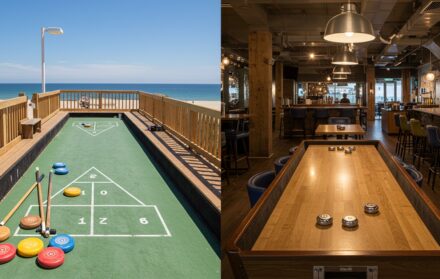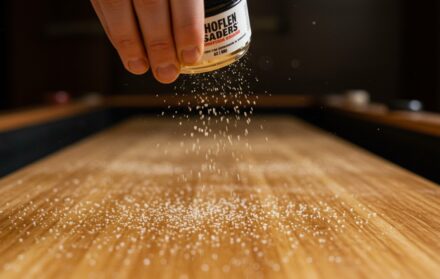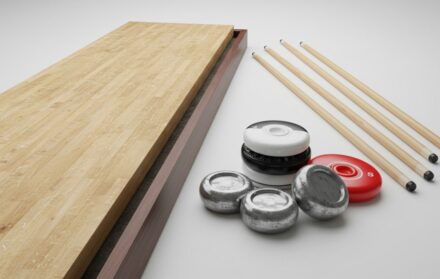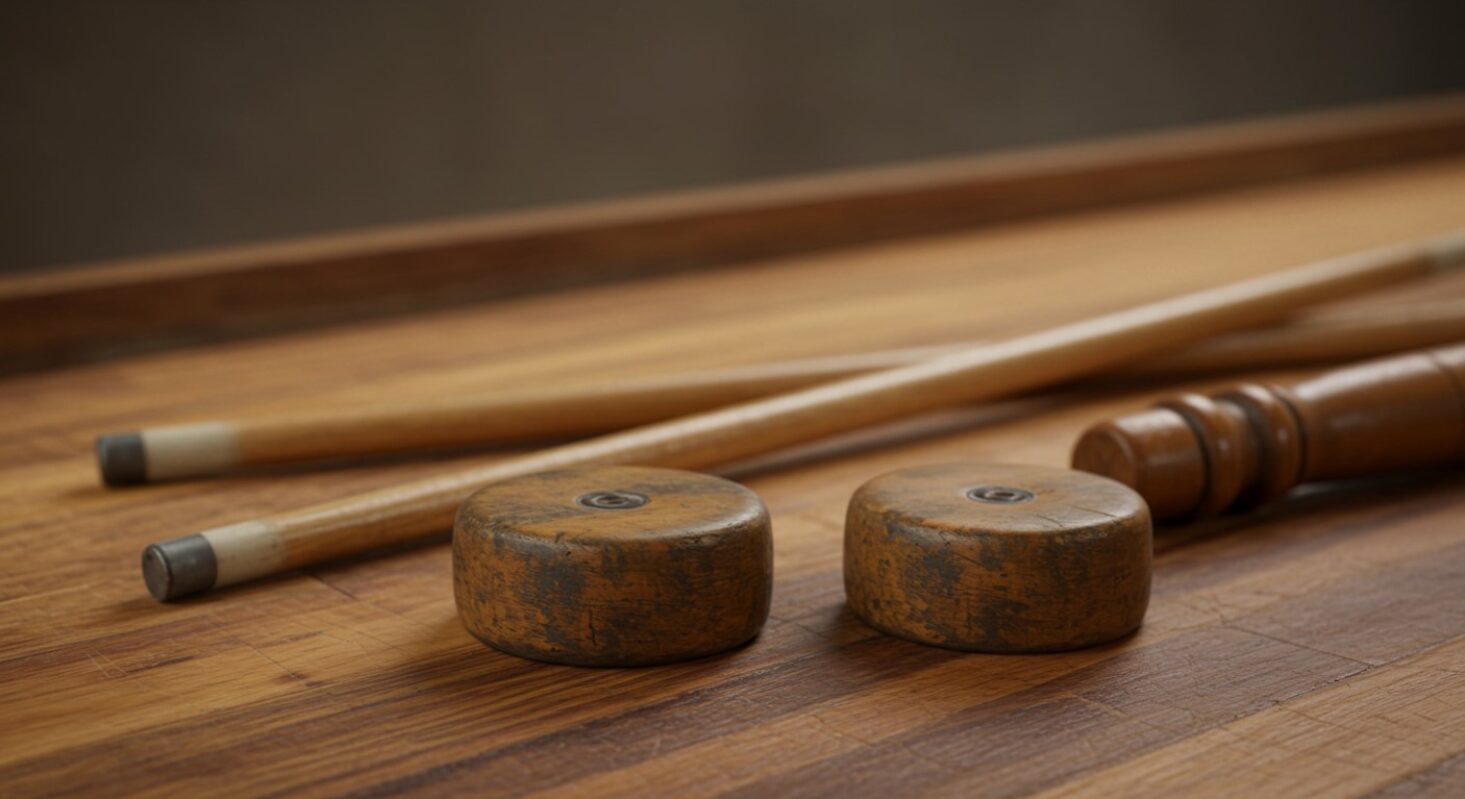
What is the History of Shuffleboard?
Shuffleboard may look like a modern pub game, but its story stretches back more than five hundred years. Today, you can find shuffleboard tables in stylish bars across London, family-friendly cruise ships crossing the Atlantic, and even in competitive tournaments with strict rules and governing bodies. Yet, the origins of shuffleboard are much older, born in medieval England and carried across oceans and centuries.
The history of shuffleboard is a tale of adaptation. It began with coins sliding across rough wooden tables, became a favourite of Tudor kings and common drinkers alike, and later transformed into a pastime for sailors on vast passenger ships. By tracing the history of shuffleboard, we can see how this simple yet addictive game of skill became woven into social and cultural life across the world.
Early Origins of Shuffleboard
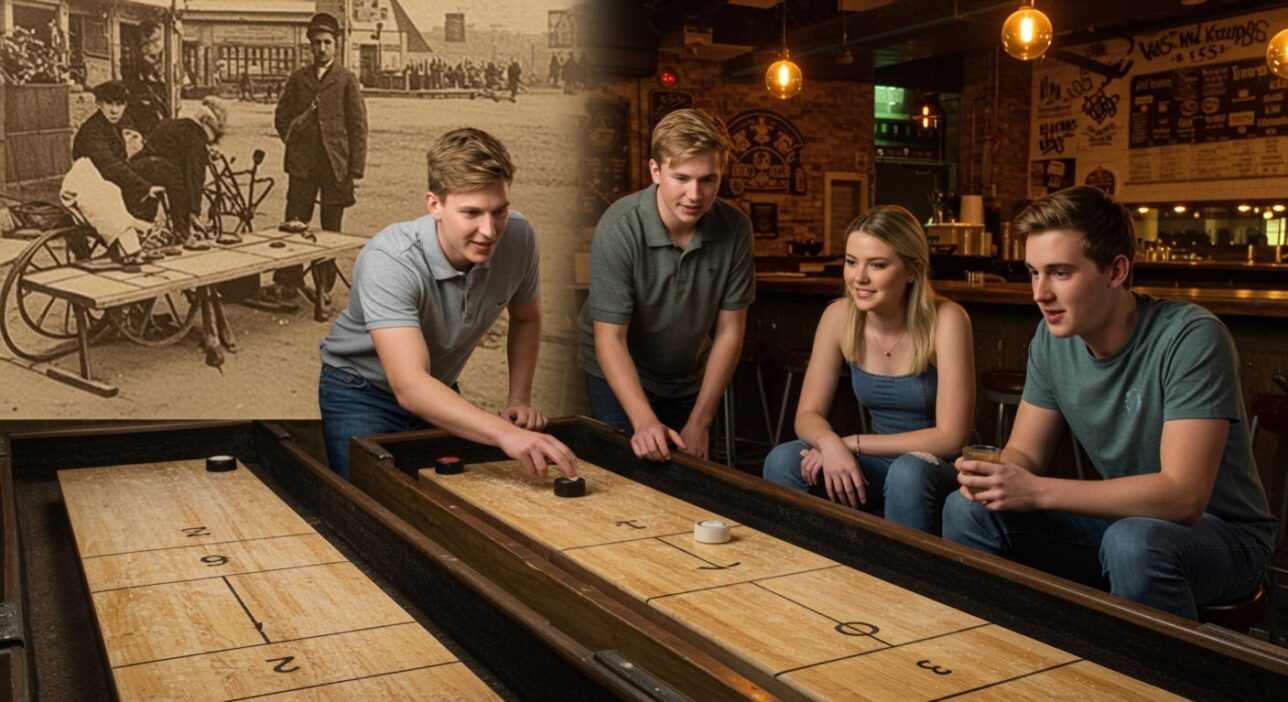
The roots of shuffleboard can be traced back to 15th century England. Historical records describe a pastime called shove-groat, where players slid a large coin known as a groat across a smooth wooden surface, aiming to land it within marked scoring zones. Over time, the game evolved to use flat metal or wooden discs, closer in shape to the modern shuffleboard puck.
In medieval society, simple games involving sliding or throwing objects were popular among both peasants and the nobility. Shuffleboard’s appeal lay in its straightforward rules and competitive edge. You did not need expensive equipment or a grand playing field — just a flat surface and something to shove.
Shuffleboard in Tudor and Stuart England
The Tudor courts played a surprisingly important role in popularising shuffleboard. Records show that Henry VIII himself enjoyed the game, although he famously banned his servants from playing due to concerns about wasted time and gambling. The game’s presence in the royal court gave it a stamp of legitimacy, even as laws tried to control betting around it.
In inns and taverns across England, shuffleboard tables became common fixtures. Patrons would challenge one another to games for drinks or small wagers, and the sport developed a strong connection to pub culture. Tables grew longer, smoother, and sturdier, with rails to stop pucks from sliding off completely.
By the Stuart era, shuffleboard was both a gentleman’s parlour pastime and a working-class tavern game. Its dual identity helped it survive periods of official disapproval and changing fashions.
Crossing the Atlantic: Shuffleboard in Colonial America
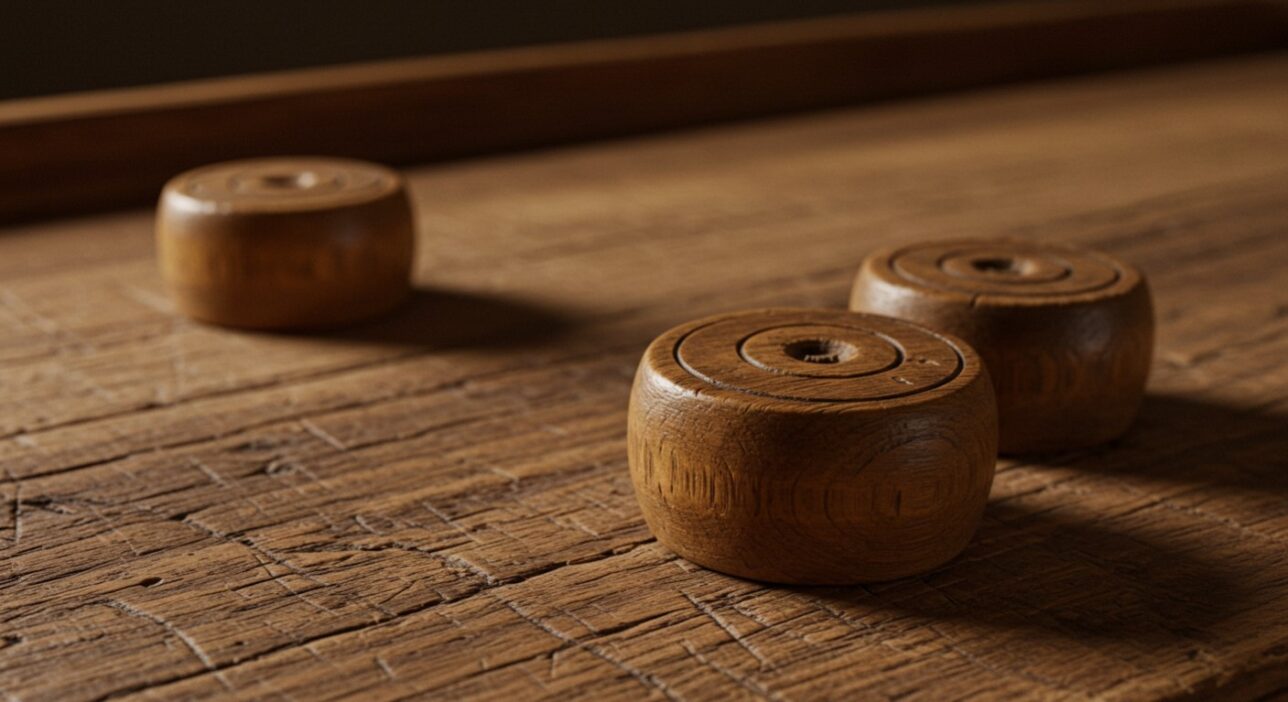
When English settlers crossed the Atlantic in the 17th century, they brought their games with them. Shuffleboard, or “shovel board” as it was often called, soon appeared in colonial taverns in Virginia, New England, and beyond.
The American version retained much of its English character but adapted to the social life of the colonies. Taverns were central gathering points, and shuffleboard tables offered entertainment alongside drinking and debate. Written records from the 1600s and 1700s confirm its presence, cementing shuffleboard as part of early American leisure.
Colonial carpenters built long, narrow tables for the game, some stretching 20 feet or more. Players would slide heavy discs down the boards, aiming for scoring sections at the far end. The format strongly resembles today’s table shuffleboard, demonstrating how little the basic concept has changed in over three centuries.
The Rise of Deck Shuffleboard
The 19th century brought a new twist in the history of shuffleboard: its move onto the decks of ships. As transatlantic voyages became more common and passenger liners grew in size, cruise companies looked for ways to keep travellers entertained. Out of this need was born deck shuffleboard.
Instead of tables, large ship decks were painted with triangular scoring zones. Players used long cues to push weighted discs along the floor, competing to land them in high-scoring areas. The rules were simple enough for beginners yet strategic enough to reward practice.
Deck shuffleboard soon became synonymous with leisure at sea. By the early 20th century, almost every major cruise ship offered shuffleboard courts, and it remains a familiar image of maritime recreation. Importantly, this version of the game helped spread shuffleboard to a truly global audience.
Shuffleboard in the 20th Century
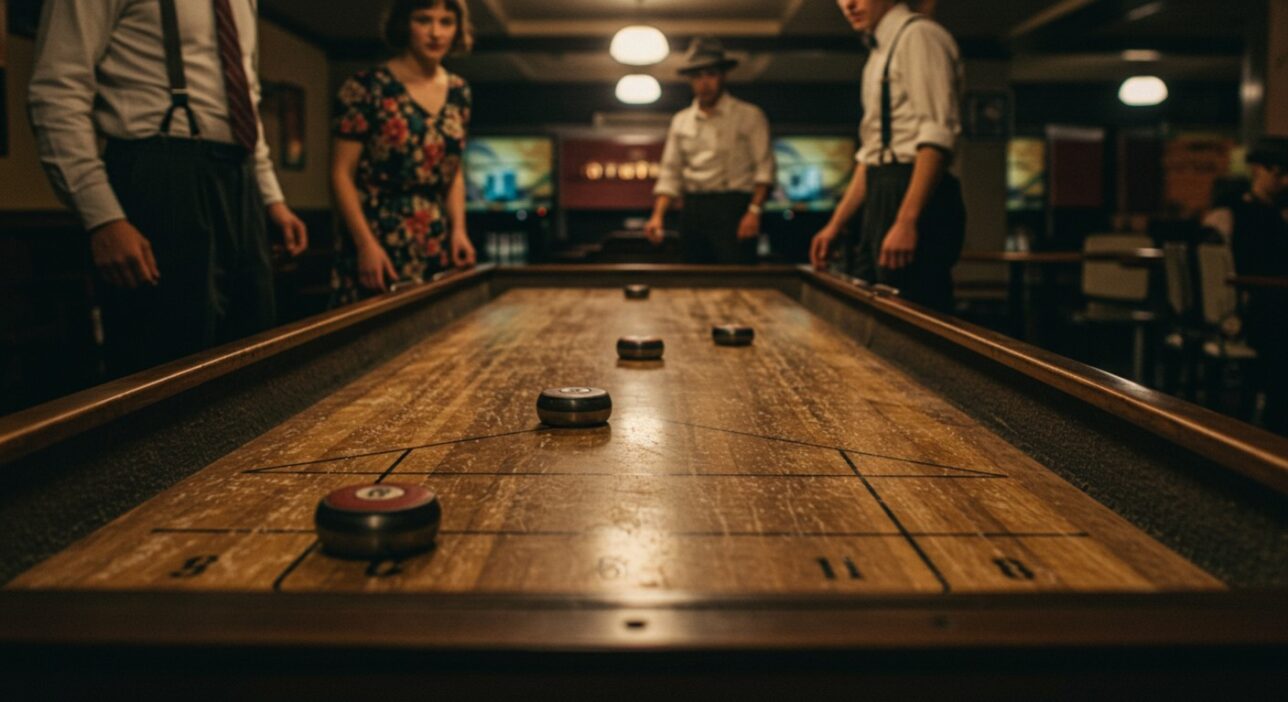
Shuffleboard entered a new golden age in the 20th century, particularly in the United States. The 1920s through the 1950s saw shuffleboard tables installed in thousands of bars, clubs, and lodges. Manufacturers such as the American Shuffleboard Company produced high-quality tables, some more than 20 feet long, that became prized centrepieces of social venues.
Tournaments flourished, drawing skilled players and enthusiastic spectators. Newspapers of the period often reported on shuffleboard contests, and local leagues gave the game a competitive structure.
However, shuffleboard’s popularity waned in the 1960s and 1970s as tastes in leisure shifted. Pool, darts, and pinball machines became the dominant fixtures in pubs and bars. Many shuffleboard tables were discarded or neglected, and the game was at risk of fading into obscurity.
A revival began in the late 20th century, driven by nostalgia and retro pub culture. Shuffleboard’s simplicity and social nature made it appealing once again, particularly to younger audiences looking for interactive games in bars and social clubs.
Shuffleboard in the UK
While shuffleboard’s origins lie in England, its modern revival has been shaped as much by global trends as by local tradition. During the 19th and 20th centuries, deck shuffleboard was widely played on British passenger liners, reinforcing its image as a holiday pastime.
In recent decades, the UK has seen a resurgence of table shuffleboard in urban nightlife. Bars in London, Manchester, and other major cities now feature shuffleboard tables alongside craft beer and cocktails. The mix of competition and camaraderie fits well with the modern social scene.
Today, shuffleboard is also appearing in community spaces and family-friendly venues. It is marketed as both a nostalgic classic and a trendy activity, bridging generations. The game’s re-emergence in the UK completes a historical circle, bringing shuffleboard back to the country where it all began.
Shuffleboard Today: Global Popularity
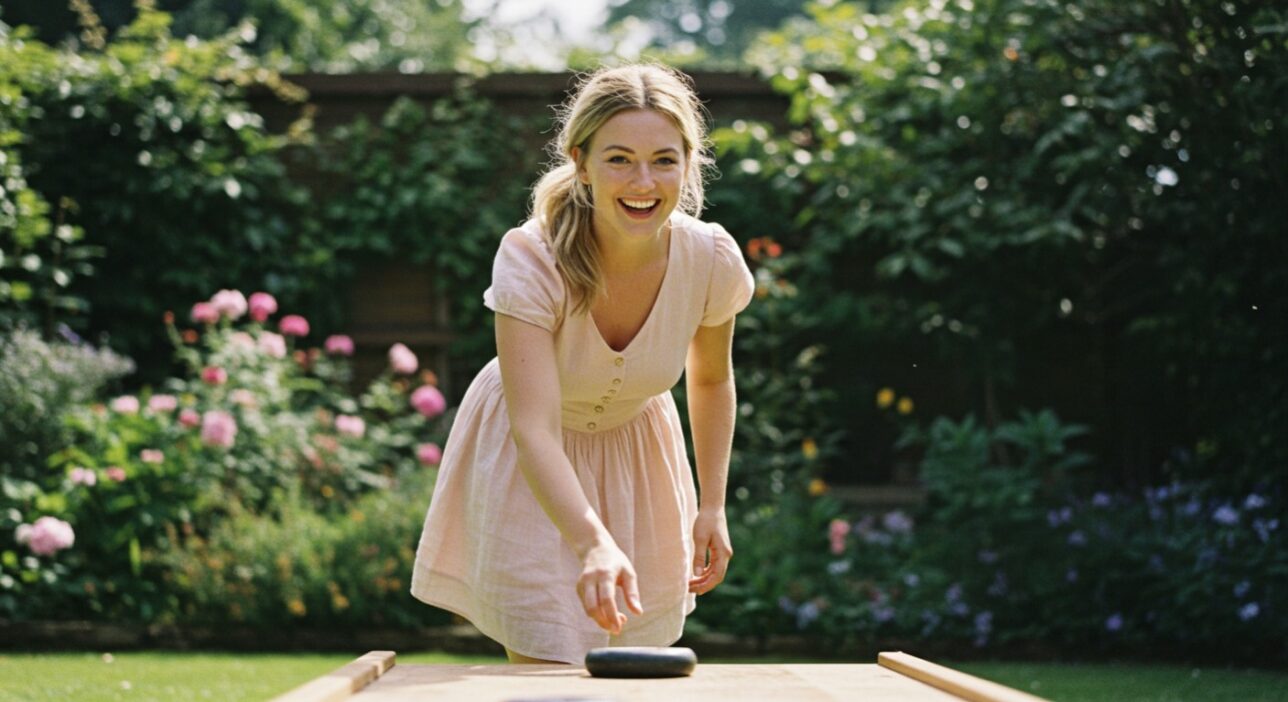
In the 21st century, shuffleboard thrives in multiple forms. Table shuffleboard has a dedicated following in bars and clubs, particularly in North America and Europe. Deck shuffleboard continues to entertain cruise passengers worldwide.
Competitive shuffleboard is organised through governing bodies such as the World Shuffleboard Federation, which oversees tournaments and promotes the game internationally. Players compete at national and global levels, with formal rules ensuring consistency across borders.
Equally important is shuffleboard’s casual side. Families, friends, and work colleagues use the game as a way to socialise, unwind, and share laughter. The growth of social gaming venues in the UK and beyond — places that combine food, drink, and games like darts or ping pong — has given shuffleboard a modern stage.
Cultural Significance of Shuffleboard
Beyond its rules and tables, shuffleboard reflects something universal about human culture: the joy of play. From Tudor monarchs to modern pub-goers, people have been drawn to shuffleboard because it combines skill, chance, and social interaction.
Shuffleboard has been depicted in paintings and mentioned in plays, a sign of its integration into everyday life. It also illustrates how games can cross class boundaries. At different points in history, shuffleboard has been enjoyed by royals, sailors, merchants, and labourers.
Its endurance also shows the power of adaptation. Whether played with coins on a Tudor table, discs on a ship’s deck, or polished pucks in a London bar, shuffleboard has always kept its essence while adjusting to new contexts.
Conclusion: Why the History of Shuffleboard Still Matters Today

The history of shuffleboard is more than a record of a game. It is a window into social life, leisure habits, and cultural exchange across centuries. From its beginnings in 15th-century England to its spread through colonial taverns, cruise ship decks, and modern bars, shuffleboard has continuously reinvented itself while retaining its charm.
Today, shuffleboard is both a living link to the past and a vibrant part of the present. Its continued popularity in the UK and worldwide shows that games with simple rules and social spirit never truly fade away. Understanding the history of shuffleboard reminds us how play, in all its forms, can unite people across time, class, and geography.


